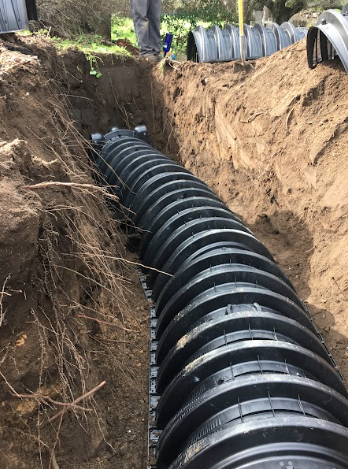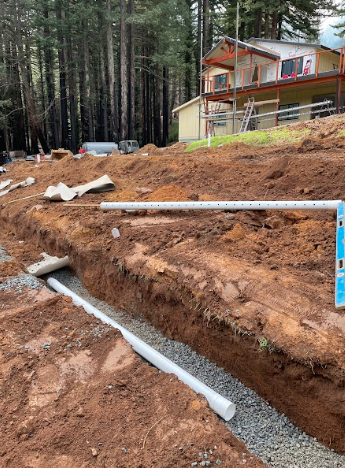WHAT ARE THE DIFFERENT TYPES OF SEPTIC LEACH FIELDS?
It's important to note that the type of leach field that is appropriate for your property will depend on a variety of factors, including soil type, site conditions, and local regulations. It's important to work with a licensed professional to design and install a septic system that meets the specific needs of your property.
Our consulting services will help determine the right type of leach field and septic design for you.
1. Gravity-Fed Drainfield: A gravity-fed drainfield is the most common type of leach field. It relies on gravity to move the effluent from the septic tank through a series of perforated pipes that are buried in trenches or beds. The effluent is distributed evenly throughout the drainfield and is treated by the soil as it percolates through.
2. Pressure Distribution Drainfield: A pressure distribution drainfield is similar to a gravity-fed system, but it uses a pump to distribute the effluent evenly throughout the drainfield. This allows for better distribution of the effluent and can result in better treatment of the wastewater.
3. Drip Irrigation System: A drip irrigation system is used in areas where water conservation is a concern. It involves installing a series of drip lines that are buried in the soil and distribute the effluent directly to the roots of plants. The effluent is treated as it percolates through the soil.
4. Mound System: A mound system is used in areas where the soil is not suitable for a traditional drainfield. It involves building a mound of sand or gravel on top of the existing soil and installing a drainfield on top of the mound. The effluent is distributed evenly throughout the drainfield and is treated as it percolates through the mound.
5. Sand Filter System: A sand filter system is used in areas where the soil is too permeable for a traditional drainfield. It involves installing a layer of sand on top of a layer of gravel and installing a distribution system on top of the sand. The effluent is distributed evenly throughout the sand layer and is treated as it percolates through.





